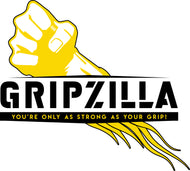Have you been hitting the gym regularly but noticing your triceps just aren’t growing the way you want?
It can be frustrating when you’re putting in the effort but not seeing the results.
The good news is, there are common reasons why this happens—and easy ways to fix it.
And we’re about to discuss what might be holding back your triceps and how you can get them growing strong and defined:
Possible Reasons Why My Triceps Are Not Growing
Listed below are some reasons that are not letting you build muscular triceps:
Insufficient focus on compound movements
Compound movements are exercises that work multiple muscle groups at once, like bench presses, dips, or push-ups.
If you're only doing isolation exercises, like tricep extensions, you're not fully engaging your triceps in a way that promotes overall muscle growth.
Compound movements allow you to lift heavier weights and stimulate more muscle fibers, which can help your triceps grow faster.
Not increasing weight or reps
To grow your triceps, you need to challenge them consistently.
If you're lifting the same weight or doing the same number of reps week after week, your muscles won't have a reason to grow. This is called "progressive overload."
Gradually increasing the weight you lift or the number of reps you perform pushes your muscles to adapt, which leads to growth over time.
Poor mind-muscle connection
The mind-muscle connection is about focusing on the muscle you're working during an exercise.
If you're not mentally engaged with your triceps during workouts, other muscles may take over, and your triceps won't get the full benefit of the exercise.
Concentrate on squeezing and feeling your triceps working in each movement to ensure you're targeting them properly.
Overtraining or undertraining
Finding the right balance between working out too much and too little is crucial for muscle growth.
Overtraining your triceps can lead to fatigue and prevent proper recovery, which is when muscle growth actually happens.
On the other hand, if you're undertraining and not working your triceps enough, they won't get the stimulus they need to grow.
Aim for about 2-3 focused tricep sessions a week, giving your muscles time to recover.
Poor diet or lack of protein
Muscles need the right nutrients to grow, and protein is essential for muscle repair and development.
If you're not eating enough protein, your triceps won't have the building blocks they need to get bigger.
Make sure you're consuming adequate protein sources like chicken, fish, eggs, or plant-based options, along with enough calories to support muscle growth.
Lack of progressive overload
Progressive overload is key to muscle growth. If you're not gradually increasing the difficulty of your workouts, your triceps will stop growing.
This means you need to add more weight, do more reps, or increase the intensity of your exercises over time.
Without this continuous challenge, your muscles won’t feel the need to adapt and grow.
What To Do To Grow Your Triceps?

Here are a couple of ways that will help you grow your triceps:
Include isolation exercises
Isolation exercises focus on working just one muscle group at a time, making them great for specifically targeting your triceps.
Examples include tricep pushdowns, overhead tricep extensions, and skull crushers.
These exercises allow you to really focus on the triceps without other muscles helping out, helping you build muscle more effectively in that area.
Use a variety of tricep exercises to target all heads
Your triceps have three parts, or "heads": the long head, lateral head, and medial head. To build well-rounded triceps, it's important to use different exercises that hit each head. For example:
- Overhead tricep extensions target the long head.
- Tricep pushdowns hit the lateral head.
- Close-grip bench press works the medial head. Mixing up your exercises ensures that all parts of your triceps grow evenly.
Train triceps 2-3 times per week
To see growth, it's important to train your triceps regularly but not every day.
Working your triceps 2-3 times per week gives them enough stimulus to grow while also allowing time for recovery.
This could be done through dedicated tricep workouts or by including tricep exercises in your chest or shoulder workouts.
Incorporate supersets or drop sets for added intensity
Supersets and drop sets are techniques that make your workouts more intense.
- Supersets involve doing two exercises back-to-back with no rest in between. For example, doing tricep dips followed by tricep pushdowns.
- Drop sets mean starting with a heavy weight and, when you can't do any more reps, lowering the weight and continuing without rest.
These methods increase the time your muscles are under tension, which helps boost muscle growth.
Eat a protein-rich diet to support muscle growth
Protein is essential for muscle repair and growth. After you work out, your body needs protein to rebuild and strengthen your muscles.
Good sources include chicken, fish, eggs, beans, and tofu.
To maximize muscle growth, aim for around 1 gram of protein per pound of body weight daily, and try to eat protein-rich meals after your workouts.
Allow sufficient rest and recovery between workouts
Muscles don’t grow while you’re exercising; they grow while you rest. Giving your triceps enough time to recover is just as important as training them.
Make sure to have at least 48 hours between intense tricep sessions so your muscles can repair and grow stronger.
Overtraining can lead to fatigue and prevent muscle growth.
Final Verdict
Building bigger triceps doesn’t have to be complicated.
By adjusting your workouts, focusing on proper nutrition, and allowing enough recovery time, you can turn things around.
Pay attention to what’s working and what’s not, make those small changes, and soon you’ll start seeing the gains you’ve been working for.
One last thing, do you know why your biceps are not growing despite your best efforts?



